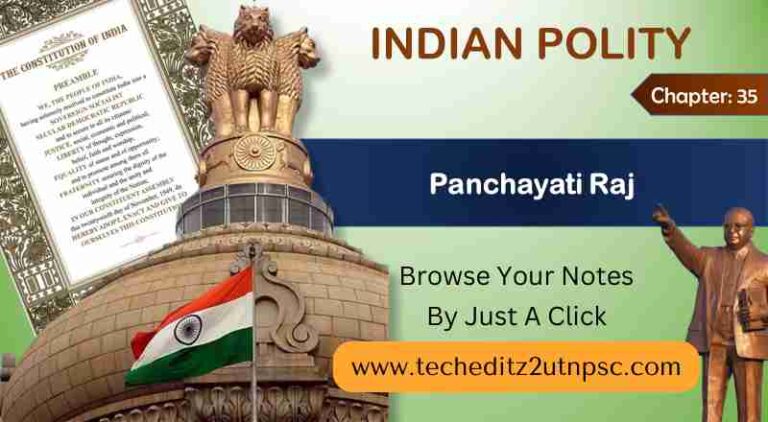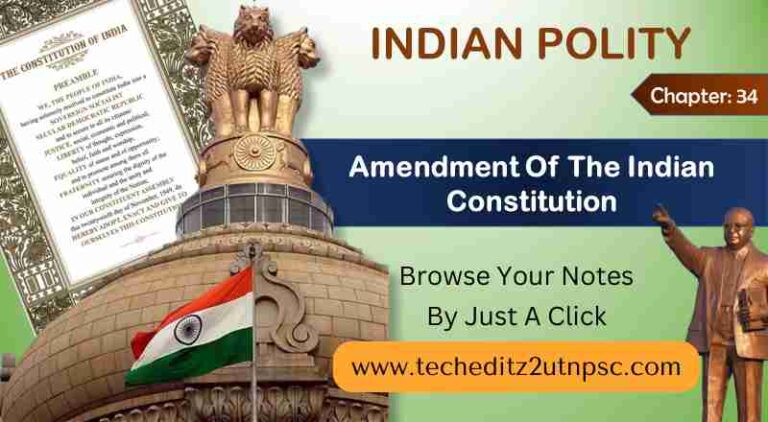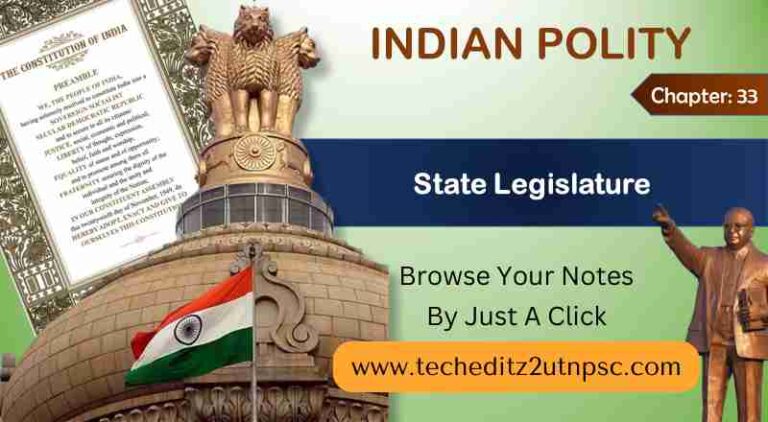support@techeditz2utnpsc.com | 8300-921-521

Salient Features Of The Indian Constitution
Indian Polity
Chapter 4: Salient Features Of The Indian Constitution
Indian Constitution
- Indian Constitution is a written Constitution.
- It is the largest Constitution. It is because
- It incorporated all the experiences gathered from the working of the all the known constitutions in the World.
- To avoid all defects and loopholes that might be anticipated from the light of other constitutions.
- To minimize uncertainty.
- Majority of the provisions were borrowed from the GOI (Government of India) act 1935 because people were familiar with the existing system.
- It is explained in detail manner otherwise the new democracy may be jeopardized (make vulnerable, risk).
- Vastness of the country.
- Multifarious challenges in the country.
- The division of powers between the union and states is so exhaustive.
- It is a single Constitution for the entire country except for Jammu and Kashmir.
Indian Constitution Is Both Rigid And Flexible:
- It is rigid, means there a special procedure for amending the Constitution.
- It is flexible, means that with an ordinary procedure some areas in the constitution can be amended.
Federal System :
- It means the division of powers between centre and states.
- Remember the word “Federation” is nowhere mentioned in the Constitution).
- Though India is a federation it also has unitary features.
Parliamentary Form Of Government:
- This forms talks about the presence of nominal (Dejure) and real (defacto) executives.
- Majority party rule.
- Collective responsibility to the Lok Sabha.
- Leadership of the Prime Minister (Chief Minister at the state level).
- The dissolution of Lok Sabha. (This type of government is present at both central and state levels).
Fundamental Rights:
- These are for the promotion of political democracy.
- These are justiciable i.e they are enforceable by the courts for their violation.
Originally 7 fundamental rights were mentioned in the constitution. - Through the 44th amendment ‘Right To Property’ has been deleted from the list of Fundamental Rights.
- At present only 6 fundamental rights are mentioned.
Directive Principles Of State Policy (DPSP):
ADVERTISEMENT
- They seek to establish welfare state in India.
- These are non-justiciable. (Cannot be challenged in the court of law)
- In the Minerva Mills case of 1980 the Supreme Court held that the Indian Constitution is founded on the bedrock of the balance between the Fundamental Rights and DPSP.
Fundamental Duties:
- Added through 42nd amendment in the year 1976.
- They were added on the recommendations of swaran Singh Committee.
- Part IV A was added for accommodating Fundamental Duties.
- Originally 10 Fundamental Duties were added.
- 11th Fundamental Duty was added in the year 2002 through the 86th Constitutional amendment.
- At present 11 fundamental duties are mentioned in part IVA.
Secular State:
- Equal respect to all religions.
- The Constitution does not uphold the any particular religion as the official religion. Universal Adult Franchise:
- All adults are permitted to vote.
- The original constitution permitted all the people who are not less than 21 years of age to vote.
- Through the 61st amendment voting age has been reduced from 21 to 18 in the year 1989.
Emergency Provisions:
- Provided for 3 types of emergencies.
- National Emergency
- State Emergency or President’s Rule
Financial Emergency:
- During National emergency India from the state of Federation it becomes Unitary.
3 Tier Government:
- Through 73rd and 74th amendments 3 tier structures was created.
- Panchayati Raj and Municipalities are made the Constitutional bodies.
Visit Our YouTube Channel For More Free Videos: Click Here
ADVERTISEMENT


